Ancient
House
Museum
Click
for More Info >>>
|
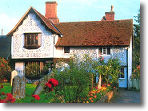 Clare
Ancient House Museum illustrates the history of Clare. Records viewable
on computer include histories of Clare houses and families from 1550. Clare
Ancient House Museum illustrates the history of Clare. Records viewable
on computer include histories of Clare houses and families from 1550.
The museum maintains
a town trail. 15 boards along the route draw attention to the more important
of the listed buildings.
|
 |
|
Churches
Click
for More Info >>>
|
 Clare
has four Churches - Clare
has four Churches -
The Parish Church of St. Peter and St. Paul - A mediaeval town
church - one of "England's Thousand Best".
The Clare Baptist Church - with a membership
of about a hundred people coming from all different denominations and
experiences.
The United Reformed Church - known to many of the locals as 'The
Chapel".
The Clare
Priory Chapel - This Roman Catholic church is located in the mediaeval
Priory grounds.
|
 |
|
Clare
Castle Country Park
Click
for Pictures >>>
|
 After
the Battle of Hastings in 1066, William the Conqueror gave his cousin,
Richard Fitzgilbert the Manor of Clare. Richard then started building
Clare Castle. The ruin of the castle’s stone keep, which was built to
protect the surrounding land, still remains today. There is a spiral path
around the motte leading to the castle’s keep where a beautiful view of
historic Clare can be seen. After
the Battle of Hastings in 1066, William the Conqueror gave his cousin,
Richard Fitzgilbert the Manor of Clare. Richard then started building
Clare Castle. The ruin of the castle’s stone keep, which was built to
protect the surrounding land, still remains today. There is a spiral path
around the motte leading to the castle’s keep where a beautiful view of
historic Clare can be seen.
|
 |
|
Clare
Common
|
 Clare
Common is the site of the former Manor of Erbury which, following demolition
of the extensive manorial building many centuries ago, has been used continuously
as grazing land. It was given to the people of Clare by Katherine of Aragon
(the first of Henry VIII's six wives) to be used as a Common Pasture for
poor people. It is now administered as a local charity. Clare
Common is the site of the former Manor of Erbury which, following demolition
of the extensive manorial building many centuries ago, has been used continuously
as grazing land. It was given to the people of Clare by Katherine of Aragon
(the first of Henry VIII's six wives) to be used as a Common Pasture for
poor people. It is now administered as a local charity.
|
 |
|
Clare
Nuttery
Click
for More Info >>> |
 Clare
Nuttery is a part of the Dedham Vale and Stour Valley Countryside Project.
The project works with local communities and landowners to Clare
Nuttery is a part of the Dedham Vale and Stour Valley Countryside Project.
The project works with local communities and landowners to 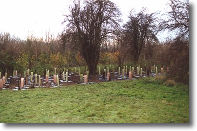 help
them improve their local environment. At the Nuttery we are creating a woodland
that we can enjoy now and our great-grandchildren will one day cherish.
Hundreds of young trees have been planted over the last 5 years, boundary
hedges are being restored and a large pond has been given a new lease of
life. There are paths winding through the trees, connecting two open glades
and creating a lovely place to walk the dog, listen to the birds or have
a picnic. help
them improve their local environment. At the Nuttery we are creating a woodland
that we can enjoy now and our great-grandchildren will one day cherish.
Hundreds of young trees have been planted over the last 5 years, boundary
hedges are being restored and a large pond has been given a new lease of
life. There are paths winding through the trees, connecting two open glades
and creating a lovely place to walk the dog, listen to the birds or have
a picnic.
|
 |
|
Clare
Priory
Click
for More Info >>> |
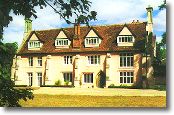 Clare
Priory, founded 1248, is the mother house of the Augustinian Friars in
Britain. The Friars returned in 1953. The religious community of Friars
and lay people provide religious retreats, both day and residential; and
the priory is the parish centre for local Catholics. The grounds and ruins
are open to the public. Clare
Priory, founded 1248, is the mother house of the Augustinian Friars in
Britain. The Friars returned in 1953. The religious community of Friars
and lay people provide religious retreats, both day and residential; and
the priory is the parish centre for local Catholics. The grounds and ruins
are open to the public.
|
 |
|
Sheepgate
Lane
|
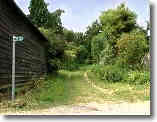  Sheepgate
Lane is the last remnants of an old drovers road adjoining the North side
of the Common and is now part of the Clare Circular Walk. An entry for
Sheepgate Lane can be found in the historic Domesday Book! Sheepgate
Lane is the last remnants of an old drovers road adjoining the North side
of the Common and is now part of the Clare Circular Walk. An entry for
Sheepgate Lane can be found in the historic Domesday Book!
|
 |
|
Circular
Walk
Click
for More Info >>>
|
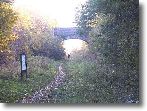 Clare
Walk is an easy 3.5 mile circular walk in the countryside around Clare
using the Country Park as your gateway. The park is open every day for
visitors and car parking and admission is free! The route is clearly marked
with green public footpath signs and yellow waymark arrows displaying
a circular walk symbol enabling you to walk in either direction. Clare
Walk is an easy 3.5 mile circular walk in the countryside around Clare
using the Country Park as your gateway. The park is open every day for
visitors and car parking and admission is free! The route is clearly marked
with green public footpath signs and yellow waymark arrows displaying
a circular walk symbol enabling you to walk in either direction.
|
 |
|
Clare
Halls
Click
for More Info >>>
|
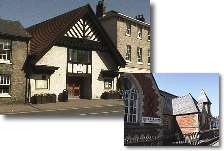 Originally
a corn exchange, the town hall was converted to it's present use back
in 1912. In 1988, major alterations took place to create a venue suitable
for a wide variety of functions and community uses. Originally
a corn exchange, the town hall was converted to it's present use back
in 1912. In 1988, major alterations took place to create a venue suitable
for a wide variety of functions and community uses.
The Old School Community
Centre was built as an Elementary School in 1862, later becoming a Primary
School before finally closing in 1974. In 1989 major building work and
refurbishment turned the school into Clare's Community Centre.
|
 |
|
 Clare
Nuttery is a part of the Dedham Vale and Stour Valley Countryside Project.
The project works with local communities and landowners to
Clare
Nuttery is a part of the Dedham Vale and Stour Valley Countryside Project.
The project works with local communities and landowners to  help
them improve their local environment. At the Nuttery we are creating a woodland
that we can enjoy now and our great-grandchildren will one day cherish.
Hundreds of young trees have been planted over the last 5 years, boundary
hedges are being restored and a large pond has been given a new lease of
life. There are paths winding through the trees, connecting two open glades
and creating a lovely place to walk the dog, listen to the birds or have
a picnic.
help
them improve their local environment. At the Nuttery we are creating a woodland
that we can enjoy now and our great-grandchildren will one day cherish.
Hundreds of young trees have been planted over the last 5 years, boundary
hedges are being restored and a large pond has been given a new lease of
life. There are paths winding through the trees, connecting two open glades
and creating a lovely place to walk the dog, listen to the birds or have
a picnic. 